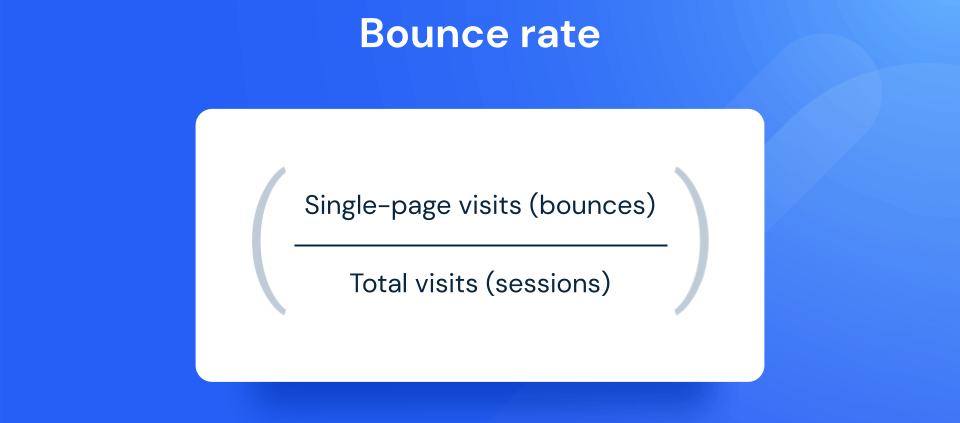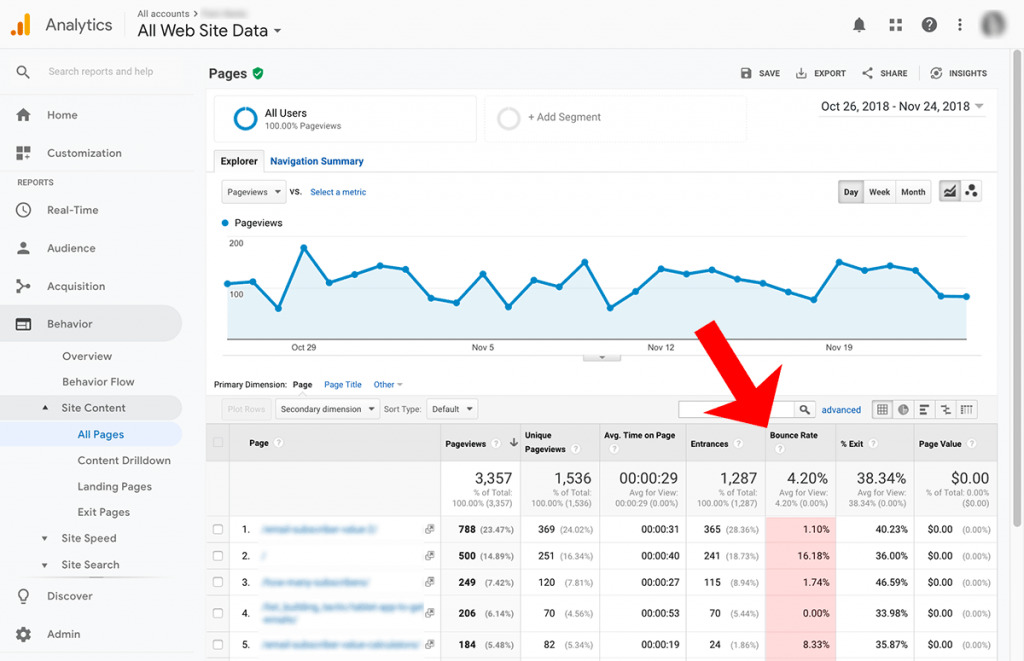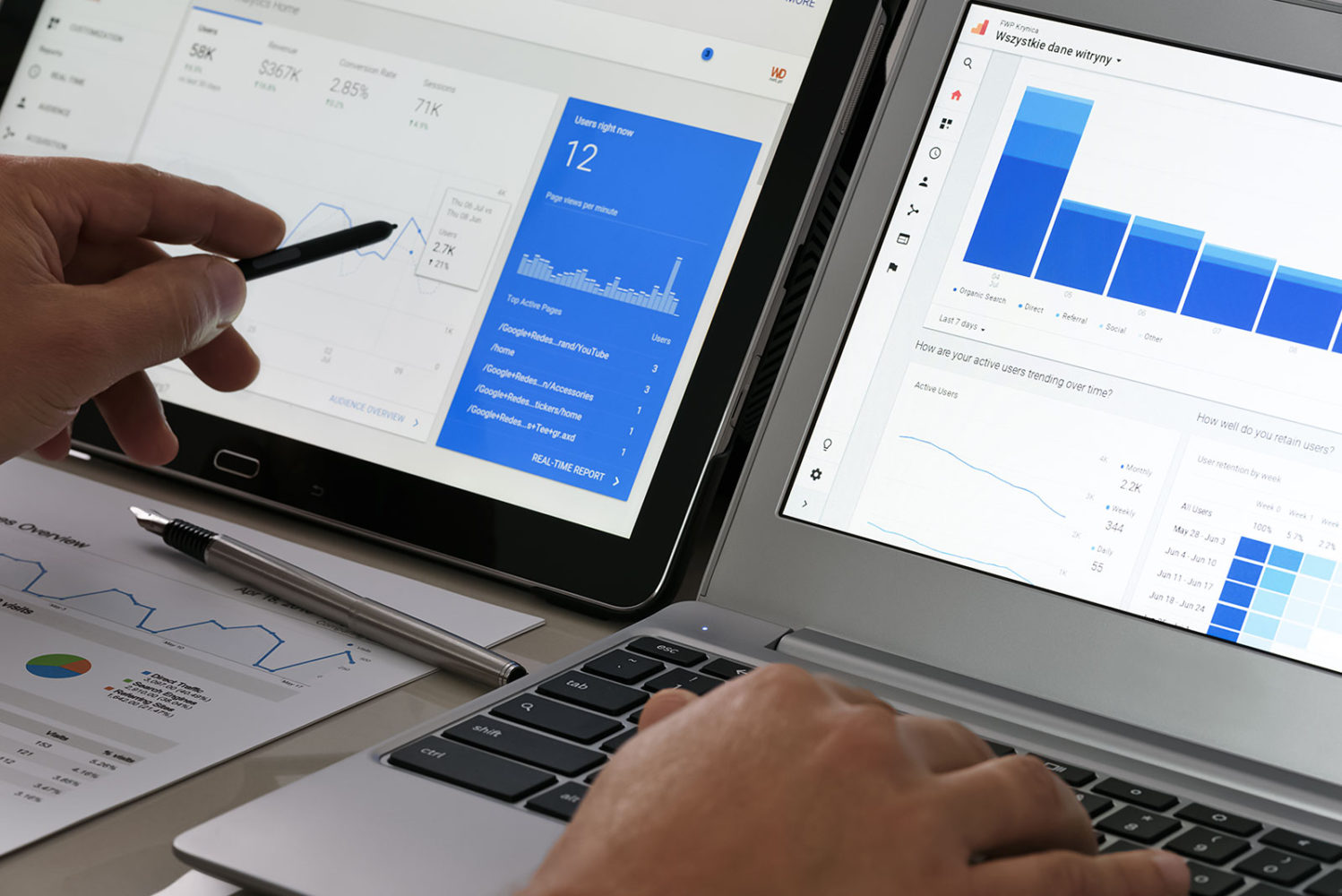In the ever-changing world of google analytics, what is the bounce rate and why is it important? It’s essential for anyone looking to improve their SEO and on-page analytics to stay updated on all terminology. Bounce rate is one of those terms that is often confusing for beginners. You may be looking at your bounce rate in google analytics, but you don’t know what it means. However, the average bounce rate in Google Analytics is just one of the vital metrics you should have an in-depth understanding of and knowledge of how to track.
By understanding how to reduce bounce rate in Google Analytics and what it means, you can better understand how well your website performs.
Moreover, a clear understanding of bounce rate can help you make necessary changes to your website to keep more people on it longer. But what does that mean exactly? And what should you do if your bounce rate is too high? In this post, you’ll learn everything you need to know about bounce rate and how to improve it to your advantage.
What Is the Bounce Rate and How is it Calculated?
In a nutshell, bounce rate measures how many people leave your website after viewing only one page. It’s expressed as a percentage and is calculated by dividing the number of single-page visits by all visits. High bounce rates aren’t always alarming – they can be helpful if you’re using them to track conversions. However, a high bounce rate than the average standard bounce rate can indicate problems with your website or marketing efforts.
On the other hand, low bounce rates are better because they suggest that people engage with your content and stick around for longer. Unfortunately, an extremely low bounce rate below the average minimal bounce rate can indicate that your website has problems.
It is crucial to note that google analytics uses a bounce rate formula expressed as a percentage to track your website performance. This equation tells you how many people left your website after viewing only a single page, expressed as a percentage of all visits. The bounce rate formula is simple and is defined as:
Bounce Rate = (Visits – Single Page Visits) / Total Visits.

(Image Credit: Similarweb)
Why Is Bounce Rate Important?
The bounce rate is significant because it can tell you a lot about the effectiveness of your website. If your bounce rate is high, it means that people aren’t staying on your site for long and may not be finding what they’re looking for. It could mean your website isn’t user-friendly or your content isn’t engaging enough. Conversely, if your bounce rate is low, it means that people are sticking around and engaging with your content.
Average Bounce Rate Google Analytics and Interpretation Tips
The average bounce rate for google analytics is 42.19%. It means that, on average, about 42% of website visitors leave without doing anything. Now that you know the average bounce rate, here are a few tips for interpreting the data in your google analytics:
- A high bounce rate does not always mean your website is ineffective – it could just mean that people leave without converting.
- A low bounce rate does not always mean your website is good – it could just mean that people are sticking around for longer.
- The best way to use bounce rates is to track them alongside other metrics like page views, visits, and time on site. The rate can give you a complete picture of how your website is performing.
- It’s helpful to compare your bounce rate to that of your competitors to get a better idea of how well you’re doing in terms of website engagement.
- Bounce rates can be misleading if not used correctly, so it’s important to take them with a grain of salt. Always use other metrics to get a complete picture of how your website is performing.
What Is a Good Bounce Rate Google Analytics
There is no one-size-fits-all answer to this question. The best way to determine a good bounce rate depends on the type of website you have. However, a good bounce rate for most websites falls somewhere between 20% and 50%. Similarly, if you are wondering what a bad bounce rate is, google analytics knows that a bad bounce rate for most websites is anything above 50% or below 20%. For example:

(Image Credit: StableWP)
Bounce Rate by Industry
The bounce rate for a particular industry can vary depending on the type of website. However, here are a few general guidelines to note:
- A blog typically has a higher bounce rate than an eCommerce store.
- The bounce rate for a business-to-consumer (BtoC) website is usually higher than that for a business-to-business (BtoB) website.
- The bounce rate for an information website is usually lower than for a commercial website.
- The bounce rate for a blog is usually higher than for a website with static pages.
- The bounce rate for a website with video content is usually lower than for a website without video content.
- The bounce rate for a website with an interactive map is usually lower than the bounce rate in a website without an interactive map.
Bounce Rate Statistics Based on Type Website
The following is statistical data of the average bounce rate for various types of websites:
You Might Also Like
- Blog – 66.32%
- Ecommerce – 26.90%
- Lead Generation – 45.05%
- Service Website – 38.72%
- Static Page – 44.44%
Bounce Rate by Country
The bounce rate can vary depending on the country. However, here are some general guidelines:
- United States typically has a higher bounce rate than other countries.
- The United Kingdom typically has a lower bounce rate than other nations.
- India typically has the highest Bounce Rate of any country.
- Japan typically has the lowest Bounce Rate of any country.
Why is My Bounce Rate High and What to Do About it
A high bounce rate generally indicates that people are leaving your website without doing anything usually because of the following reasons:
1. People Don’t Find What They’re Looking for
When people visit your website, they expect to find what they’re looking for right away. If they can’t find it quickly, they’ll leave. The issue is especially true for eCommerce stores. If people can’t find what they’re looking for on your website, then they’ll go to a competitor’s website. To retain more of your website traffic, the following could be helpful:
- Improve the design of your website so that it’s easy to navigate and find necessary products or information.
- Also, make sure that all of your content is up-to-date and relevant.
- Ensure that you use clear and concise titles, headings, and descriptions so that people know what each page is about before they even click on it.
- If you have a blog, ensure that you include keywords in your posts so that people can find them easily.
2. Your Website Page Loads Too Slow
If a website takes too long to load, people will quickly leave; which is especially true for mobile users. If your website doesn’t load quickly on a mobile device, people will likely leave and never come back. It is necessary to optimize your website speed by:
- Using a tool like Google’s PageSpeed Insights to see how fast your website loads and identify ways to make it faster. (Example in image below)
- Optimize your images so that they don’t slow down your website.
- Remove any unnecessary scripts or plugins from your pages.
- Minimize the number of redirects on your website.
- Compress all of the files on your website to increase load speed.
- use a content delivery network (CDN) to speed up the loading time of your website.

(Image Credit: Google Developers)
3. Your Website is Too Complicated
If a website is too complicated with too much information to digest, people will leave. Thus, to have a good website:
- Simplify the design of your website and make it easy to navigate.
- Use clear and concise titles, headings, and descriptions so that people know what each page is about before they even click on it.
- Ensure that all of your content is up-to-date and relevant.
- If you have a blog, ensure that you include keywords in your posts so that people can find what they are looking for quickly.
3. The Website is Too Boring
If a website is too boring, people will bounce to a competitor’s site. This is especially true for users who are not interested in the topic of your website. Make your website content engaging by implementing following best practices:
- Add more content to your website that’s interesting and engaging.
- Write blog posts that are relevant to your target audience.
- Make use of images and videos to break up the text on your pages.
Comparison of Exit Rate and Bounce Rate Google Analytics
Although there is some correlation between bounce rate and exit rate, the two metrics ultimately measure different aspects of user behavior on your website. Exit rate is a metric that measures how many people leave your website after viewing your website rather than a single page. On the other hand, the bounce rate is a metric that measures how many people leave your website after viewing only one page (the page they landed on). Improving your exit rate can help reduce your bounce rate and vice versa. There are some general guidelines concerning bounce rate and exit rate you should know:
- Websites with a high exit rate generally have a higher bounce rate than websites with a low exit rate.
- Websites with a high bounce rate generally have a lower conversion rate than websites with a low bounce rate.
- On the other hand, blogs have a lower exit rate than eCommerce stores, but their bounce rates are generally higher.
- It’s important to note that a high bounce rate doesn’t always mean that a website is unsuccessful – it could simply mean that the website is not relevant to the visitor’s needs.

(Image Credit: CXL)
How to Reduce Bounce Rate Google Analytics
There are a few things you can do to improve your website’s bounce rate:
1. Create SEO-Friendly Pages
Make sure your pages are well-optimized for SEO so people can find them easily. Thus, it would be best to always include your target keyword in the title, meta description, and throughout the content of your page.
2. Create High-Quality Content
Write interesting and engaging content that can keep people coming back for more. When people find your website, they want to find what they are looking for and not just leave after viewing one page. Thus, make sure your content is well-written, accurate, and informative. Include images and videos to break up the text and keep people engaged. Create titles that are intriguing and properly summarize your text. Use keywords throughout your content to help it rank higher in search engines.
3. Optimize Site Visuals
Use attractive and eye-catching visuals to break up the text and add interest. Visuals can also help to communicate your message more effectively. Ensure they are high quality and relevant to your content.
4. Make Your Website Mobile Friendly
More and more people are using their mobile devices to browse the internet, so it’s important that your website is responsive and looks good on all devices. If your site isn’t mobile-friendly, you’re likely to lose out on a lot of traffic.

(Image Credit: Business 2 Community)
6. Use Simple and Easy Navigations
Make sure your website is easy to navigate. People should find what they’re looking for quickly and easily. If it’s difficult to navigate, they’re likely to leave your site without engaging at all.
7. Create Relevant Content for Your Target Audience
Ensure your content is relevant to your target audience. Otherwise, users won’t find what they’re looking for, resulting in a high bounce rate. Cater to the needs and interests of your target market and provide them with valuable information that will help them solve their problems.
8. Encourage Engagement
Use pop-ups and call-to-action buttons to encourage people to engage with your content. If you have something interesting to offer, make it easy for people to find and click.
9. Use Simple Website Design
Keep your website design simple and uncluttered. Too much information or too many visuals can be distracting and overwhelming, leading to a high bounce rate. Use a clean and modern design that is easy to read and find the necessary information.
The Power of Bounce Rate
A bounce rate is just one small piece of the puzzle for tracking website performance.
1. Track Conversion
The power of bounce rates is that they can track conversions. If you’re using a landing page to track conversions, for example, and the bounce rate is high, it means people are leaving your website without converting. Conversely, if the bounce rate is low, it means people are sticking around and potentially converting to a customer.
2. Track Engagement
Another use of bounce rates is to track website engagement. If the bounce rate is high, people aren’t engaging with your content, which could signify that you need to make some changes. Conversely, if the bounce rate is low, it means people are interested in what you have to say and might even come back for more.
3. Track User Behavior
Yet another way to use bounce rates is to track user behavior. If the bounce rate is high, it means people are leaving your website without doing anything – which could be a sign that they’re not finding what they’re looking for. This could mean you aren’t using the right keywords or targeting the right kind of clients. Conversely, if the bounce rate is low, it means people are spending more time on your website and might even be converting.
4. Get a Better Overall Picture
You should not use the bounce rate concept in isolation from other metrics. Rather, use it along with other metrics to get a better overall picture of how your website is performing. By tracking bounce rate alongside page views, conversion rate, visits, and time-on-site, for example, you can see which pages are most popular and how people are interacting with your content.
5. Compare Your Bounce Rate to Competitors
It can also be helpful to compare your bounce rate to that of your competitors. The results can give you a good idea of how well you’re doing in terms of website engagement. If your bounce rate is higher than theirs, it means you have some work to do – but if it’s lower, it means you’re doing something right. Here is an example of where you can find your competitor’s bounce rates on Google Analytics:

(Image Credit: Acquisio)
Pros and Cons of Bounce Rate in Google Analytics
There are both pros and cons to using bounce rates in Google Analytics. Here are a few of the most important ones:
Pros:
- Bounce rates can be used to track conversions.
- Bounce rates can be used to track website engagement.
- Bounce rates can be used to track user behavior.
Cons:
- Bounce rates should not be used in isolation.
- Bounce rates can be misleading if not interpreted correctly.
- There are no standard bounce rates since the rate varies depending on the type of website you have.
Conclusion
There is no one answer to the question “What Is a Good Bounce Rate?” The bounce rate can vary depending on the type of website, the country, and even the time of year. In general, however, it is best to keep your bounce rate as low as possible. Low rates can help you improve your conversion rate and keep people engaged with your website. Moreover, it’s vital to remember that there are no hard and fast rules – every website is different, and what works for one site may not work for another. Thus, experimentation is key. However, by following these tips, you can fully understand reducing bounce rates by using Google Analytics and keeping people on your website longer.
Diib Digital: Keeping Bounce Rates as Low as Possible!
Diib offers a comprehensive and effective solution to your bounce rate issues. With a custom dashboard and easy to understand objectives, you will quickly see a solution to your bounce rate issues. We use real statistics and professional strategies to improve the metrics on your website, lower bounce rates and boost conversions. Here are a few of the features you’re sure to appreciate:
- Bounce rate monitoring and repair
- Social media integration and performance
- Broken pages where you have backlinks (404 checker)
- Keyword (including snippets), backlink, and indexing monitoring and tracking tools
- User experience and mobile speed optimization
- Technical SEO monitoring
Click here for your free 60 second site scan or simply call 800-303-3510 to speak to one of our growth experts.




Archana K says:
Keeping the bounce rate as low as physically possible is a must. We try to keep relevant content on our pages, content that has been searched often and will keep visitors around by catching their attention.